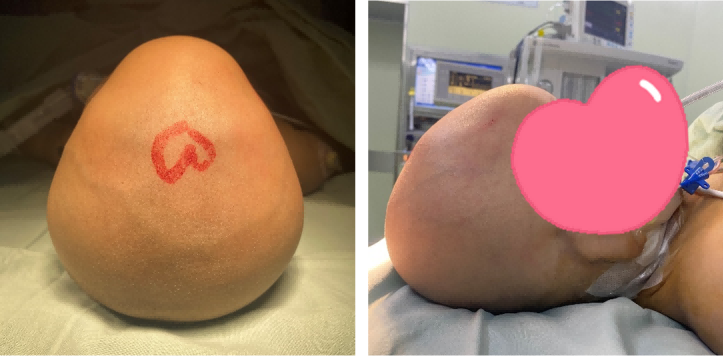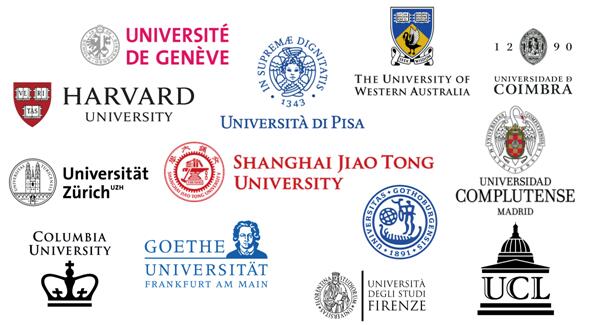Returning to a "good" head shape, even slapping the forehead? 3D printing shows a male baby's skull reassembled, with a 1-year-old baby's head resembling a boat shaped eye socket | Child | Skull
At the full moon, Xiaoqingqing was discovered to have a protruding frontal bone and some abnormal head shape, but the family didn't pay much attention and always thought it would be better if it grew longer. However, as Qingqing grew up, his mother found that he had neither a round head nor a flat head, but a boat shaped head; Xiao Qingqing's temper gradually became irritable, often crying and even slapping her forehead. Wang Xiaoqiang, Deputy Director of Pediatric Neurosurgery at Xinhua Hospital Affiliated to Shanghai Jiao Tong University School of Medicine, found that behind the head of the boat is a condition of cranial stenosis, which not only affects appearance, but may also lead to brain dysfunction.
In order to minimize the impact on children, Wang Xiaoqiang re customized Qingqing's skull by 3D printing and reshaping it, and through surgical stitching, helped Qingqing restore a circular head.
The child's head shape is becoming increasingly strange, it turns out to be narrow skull syndrome
When the parents of the post-90s generation rushed from Jiangsu to Xinhua Hospital with their 1-year-old Qingqing in their arms, they looked worried. The child's mother told Wang Xiaoqiang that when Qingqing was full moon, she first noticed a protruding frontal bone and abnormal head shape. At that time, she did not pay attention, but as the child grew older, the situation not only did not improve, but also became more apparent. This couple has traveled to various local hospitals with their children and met countless doctors, but the conclusion is: follow-up observation.
Observing day and night has made parents increasingly worried: "When Qingqing is 10 months old, the head CT shows a slight depression at the junction of the frontal and temporal bones on both sides; at 11 months old, a follow-up examination reveals that the child's forehead is narrow and pointed, and the anterior fontanelle is basically closed. It is recommended to continue follow-up observation." Taking into account the child's medical history and preliminary examination results, Wang Xiaoqiang believes that the child not only has an unsightly head shape, but also has a narrow skull syndrome.
Skull stenosis, also known as early closure of cranial sutures or cranial bone stenosis, is a collective term for diseases such as narrowing and deformities of the cranial cavity caused by one or more cranial sutures being closed prematurely in infants and young children, as well as restricted brain development.
But this disease is not uncommon. On a global scale, one out of every 2000 to 2500 babies is born, ranking second in congenital craniofacial malformations, second only to cleft lip and palate. Male patients are more common than females, accounting for 60% to 80% of the total number of patients.
So, why does Qingqing suffer from craniostenosis? Faced with his mother's question, Wang Xiaoqiang introduced that the cause of the disease is currently unknown, but some of it is related to genetic mutations. Premature closure of cranial sutures during a child's growth and development can lead to a narrow cranial cavity that cannot adapt to normal brain development. It can manifest as various head deformities, such as boat shaped head, triangular head, oblique head, pointed head, etc; It can also manifest as elevated intracranial pressure, developmental delay, low intelligence, abnormal mental activity, seizures, and other symptoms.

After 3D reconstruction of the head CT, the unloading of the orbit and reconstruction return to a "good" head shape
After admitting Qingqing to the hospital, Wang Xiaoqiang had multiple communications and exchanges with Director Ma Jie of the Pediatric Neurosurgery Department, brainstorming and jointly discussing the surgical plan to ensure good surgical results. The primary goal of cranial stenosis surgery is to relieve intracranial hypertension, followed by the restoration of the skull prototype. Experts immediately developed the most suitable surgical treatment plan for children through head CT three-dimensional reconstruction and head MRI examination.
Wang Xiaoqiang performed 3D printing and reshaping of the skull based on the imaging data of the patient before surgery, obtaining a 1:1 resin model. The surgery was simulated first. During the simulation operation, it was found that the eye sockets of the patient were shorter and narrower than those of normal children. If only routine operations were performed, although intracranial pressure was released, it could not solve the problem of the eye sockets. From the perspective of postoperative beauty, the effect could not be optimal. However, to solve the problem of the eye socket, it is necessary to remove the socket and then reassemble it, which will consume more time and energy compared to conventional surgical procedures. Considering the future of the child, Wang Xiaoqiang decided to take an even more difficult path - to break free and reorganize.
During the surgery, doctors found that the intracranial pressure in the child had reached 19cmH2O, which is also an important factor for the child's tendency to cry. After opening the skull, it was found that the child's bones had multiple indentations and some of the bones were thin, further confirming the child's cranial hypertension. The entire surgery lasted for 5 hours. The doctors removed the entire skull above the eye socket of the patient, and went through a series of processes such as osteotomy, suturing, rotation, replacement, splicing, expansion, shaping, and fixation. The effect was immediate, and the patient's deformed boat shaped head turned into a normal round head, restoring its smart and lovely appearance. On the second day after the surgery, Qingqing's condition stabilized and he was transferred to a regular ward, and he was no longer prone to crying.
Wang Xiaoqiang pointed out that there is currently no special drug treatment for craniostenosis, and only surgical methods can be used. The purpose is to expand the cranial cavity, relieve intracranial pressure, enable normal development of brain tissue, protect vision, and also improve appearance. For cranial stenosis, early detection and treatment are necessary. Different age groups have different treatment options, such as minimally invasive neuroendoscopic craniotomy, skull traction, and skull reconstruction. The treatment of craniostenosis should combine the characteristics of pediatric neurosurgery and plastic surgery, and adopt individualized treatment to improve the child's appearance and restore cranial function.




